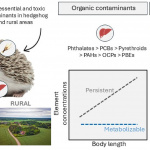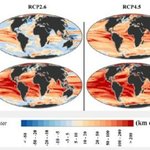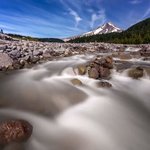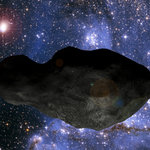A recent analysis is sounding an environmental alarm over brominated flame retardants, PCBs, plastic, lead, pesticides, and heavy metals.
They believe they are the first to find evidence of hedgehog exposure to PAHs, phthalates and pesticides through analyses of liver tissue.
Urban green spaces are prized by humans because they attract many species of wildlife but they are still in cities, so they will include synthetic materials and chemicals no matter how diligent about pollution people think they are. Hedgehogs are ramblers, they travel in and out of parks and gardens every night eating …
Earth Science
The deeper layers of the ocean are warming at a slower pace than the surface but animals living in the deep ocean are more exposed to climate warming and will face increasing challenges to maintain their preferred thermal habitats in the future, according to a new model in Nature Climate Change which analyzed contemporary and future global patterns of the velocity of climate change across the depths of the ocean.
Despite rapid surface warming, the team found that global mean climate velocities in the deepest layers of the ocean, greater than half a mile below the surface, have been 2X to…
The Arctic is predicted to warm faster than anywhere else in the world this century, perhaps by as much as 7°C. These rising temperatures threaten one of the largest long-term stores of carbon on land: permafrost.
Permafrost is permanently frozen soil. The generally cold temperatures in the Arctic keep soils there frozen year-on-year. Plants grow in the uppermost soil layers during the short summers and then decay into soil, which freezes when the winter snow arrives.
Over thousands of years, carbon has built up in these frozen soils, and they’re now estimated to contain twice the carbon…
Our new research is tracing the development of the world's vital non-living nature.
The health and wellbeing of humans is underpinned by the natural world. Living nature in the form of ecosystems and biodiversity is the world’s life support system. It is crucial, but under threat.
Equally important, but less discussed, is non-living nature or “geodiversity”. This includes rocks, soils, water and landforms. Our new research discusses how all of nature – including the non-living – must be explicitly considered in policy if a sustainable world is to be achieved.
Nature is complicated and…
A gigantic meteorite, as much as one kilometer wide, struck off the coast of Scotland and left a crater 15 to 20 kilometers in size.
Luckily, that happened 1.2 billion years old and was only even discovered in 2008 near Ullapool, NW Scotland but now its precise location is no longer a mystery.
In a paper published today in Journal of the Geological Society, a team led by Dr Ken Amor from the Department of Earth Sciences at Oxford University, show how they have identified the crater location buried beneath both water and younger rocks in the Minch Basin.
The material excavated during a giant…



